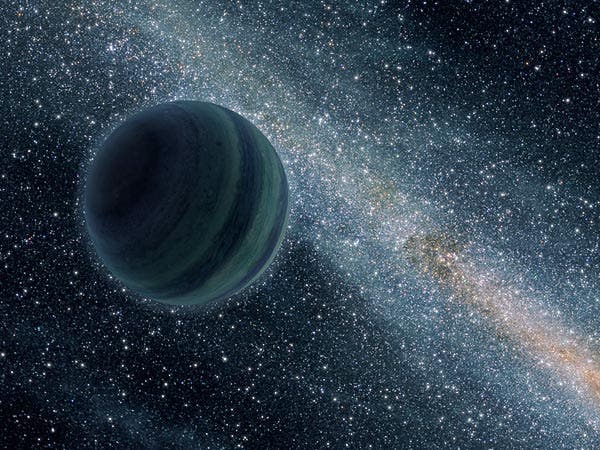According to a recent study published by researchers from the Kavli Institute for Particle Astrophysics and Cosmology (KIPAC), our galaxy may be ‘infested’ with nomad planets, which wander aimlessly instead of orbiting a star. Furthermore, the study concluded there may actually be 100,000 times more “nomad planets” in the Milky Way than stars.
If this theory is proven correct, it will severely affect our current understanding about planetary formation and will even affect what we think about the origin and abundance of life in our galaxy.
“If any of these nomad planets are big enough to have a thick atmosphere, they could have trapped enough heat for bacterial life to exist,” said Louis Strigari, leader of the team that reported the result in a paper submitted to the Monthly Notices of the Royal Astronomical Society.
The thing is, even though these planets don’t have the luxury of a star to offer them warmth, they might generate enough heat to support life through radioactive decay and tectonic activity. Past studies have shown more than 500 planets outside our solar system, almost all of which orbit stars, and last year alone, astronomers identified about a dozen nomad planets, through a technique called gravitational lensing, which analyzes stars whose light is momentarily refocused by the gravity of other passing planets.
The traditional belief was that roughly two nomads exist for every typical, so-called main-sequence star in our galaxy, but this new research showed that nomad planets may actually be 50.000 times more frequent than that.
“To paraphrase Dorothy from The Wizard of Oz, if correct, this extrapolation implies that we are not in Kansas anymore, and in fact we never were in Kansas,” said Alan Boss of the Carnegie Institution for Science, author of The Crowded Universe: The Search for Living Planets, who was not involved in the research. “The universe is riddled with unseen planetary-mass objects that we are just now able to detect.”
“Few areas of science have excited as much popular and professional interest in recent times as the prevalence of life in the universe,” said co-author and KIPAC Director Roger Blandford. “What is wonderful is that we can now start to address this question quantitatively by seeking more of these erstwhile planets and asteroids wandering through interstellar space, and then speculate about hitchhiking bugs.”




